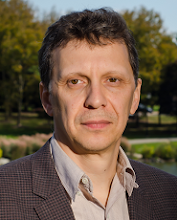16% through The Information: A History, a Theory, a Flood by Gleick, James on Kindle for Android! http://www.amazon.com/kindleforandroid/
Update (11/23/2013): " Now, nearly half a century after the war hero's suicide, Queen Elizabeth II has finally granted Turing a pardon." ( http://usat.ly/19bLZET ) Long overdue!!! With academic background in applied mathematics and computer science and years of experience in Information Technology it would be incredibly surprising if I didn't know of Alan Turing, or so I thought. Sure, I knew who he was and had a good idea of what he had contributed to the fields of mathematics, logic, cryptography, and of course computer science, which he basically founded; and things like Turing Machine, Turing Test, and Enigma Code-breaking have been widely popularized. I also knew that he died relatively young, but I am ashamed to admit that I didn't know anything about the circumstances surrounding his premature death. That is until I read the following in the book titled "The Information: A History, a Theory, a Flood" by James Gleick: "Turing's hom

Some have already, or plan to complete follow-up surveys with their individuals, is ready to} present high-quality comparative information on post-pandemic status and its implications. However, 코인카지노 minimal of|no less than} 4 longitudinal research exist which have playing data collected previous to COVID-19 onset. All of these are well-positioned for further follow-ups, though, excluding Leonard and colleagues, it is unclear whether these are planned. The investigation by Auer et al.[25▪], which focused specifically on on-line sports bettors, reported behavioural data from a web-based operator. The different three longitudinal research [26,31▪,36▪] depend on self-report data. In all instances, playing involvement was collected individually for every playing exercise, which is considered the best methodology .
ReplyDelete